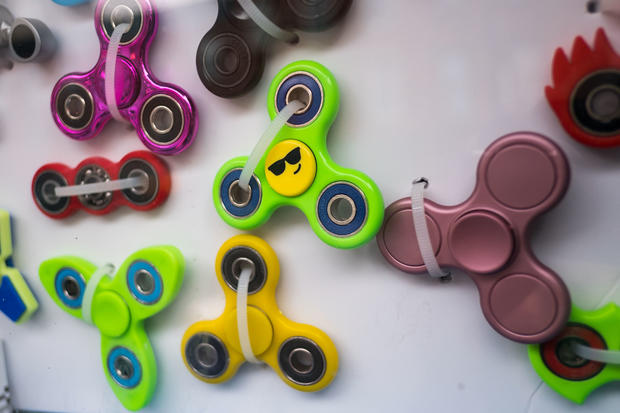What Products Still Contain Lead?
MINNEAPOLIS (WCCO) -- A consumer group asked Target to take a brand of fidget spinners off its shelves because of lead.
U.S. Public Interest Research Group tested the "Fidget Wild Premium Spinner" and found the brass version contains up to 300 times the lead allowed in children's toys. The metal version tested at 1,300 ppm, which is 13 times the limit.
Target said on Thursday it would continue to sell this brand of fidget spinner, which the packaging says is intended for ages 14 and up.
Target spokesperson Jenna Reck said In a statement, "The CPSC has specific guidance in place for manufacturers of fidget spinners, which are carried at a variety of retailers."
The Consumer Product Safety Commission defines most fidget spinners as "general use products," unless they are primarily intended for children under age 13.
The CPSC says this particular fidget spinner is not considered a children's toy and is not required to meet the lead standards for children's products.
So, what are the rules when it comes to lead?
Lead is not banned, but it is highly regulated in certain products. In 1978, a federal law was passed to ban lead-based paint. The Consumer Product Safety Improvement Act of 2008 essentially banned lead in children's toys and jewelry by limiting it to a trace amount of 100 ppm.
Third parties must test those children's products in a CPSC-approved laboratory before selling them.
Lead is not easily absorbed through the skin, but rather becomes a problem when it's ingested.
"Most of the time products that are marketed towards adults don't have regulations around whether or not they can have lead," said Stephanie Yendell, epidemiology supervisor at the Minnesota Department of Health.
She says it is hard to tell how products are regulated regarding lead because there's no single agency that has jurisdiction over all types of products that might contain lead.
For example, the Food and Drug Administration had safety standards when it comes to products that touch food, like packaging or cookware.
According to Brent Cleveland, director of the Fashion Jewelry and Accessories Trade Association, there are no lead regulations when it comes to jewelry for adults, but companies that sell jewelry follow voluntary guidelines.
Yandell says the Minnesota Department of Health relies on regulatory agencies and consumer groups to tell them which products contain lead.
Lead-based paint, old toys, imported ceramics, alternative medicines and spices were the major culprits of the 1,200 reported cases of elevated lead levels in Minnesota last year.
Yandell recommends children be tested for lead exposure when they are 1 and 2 years old.




